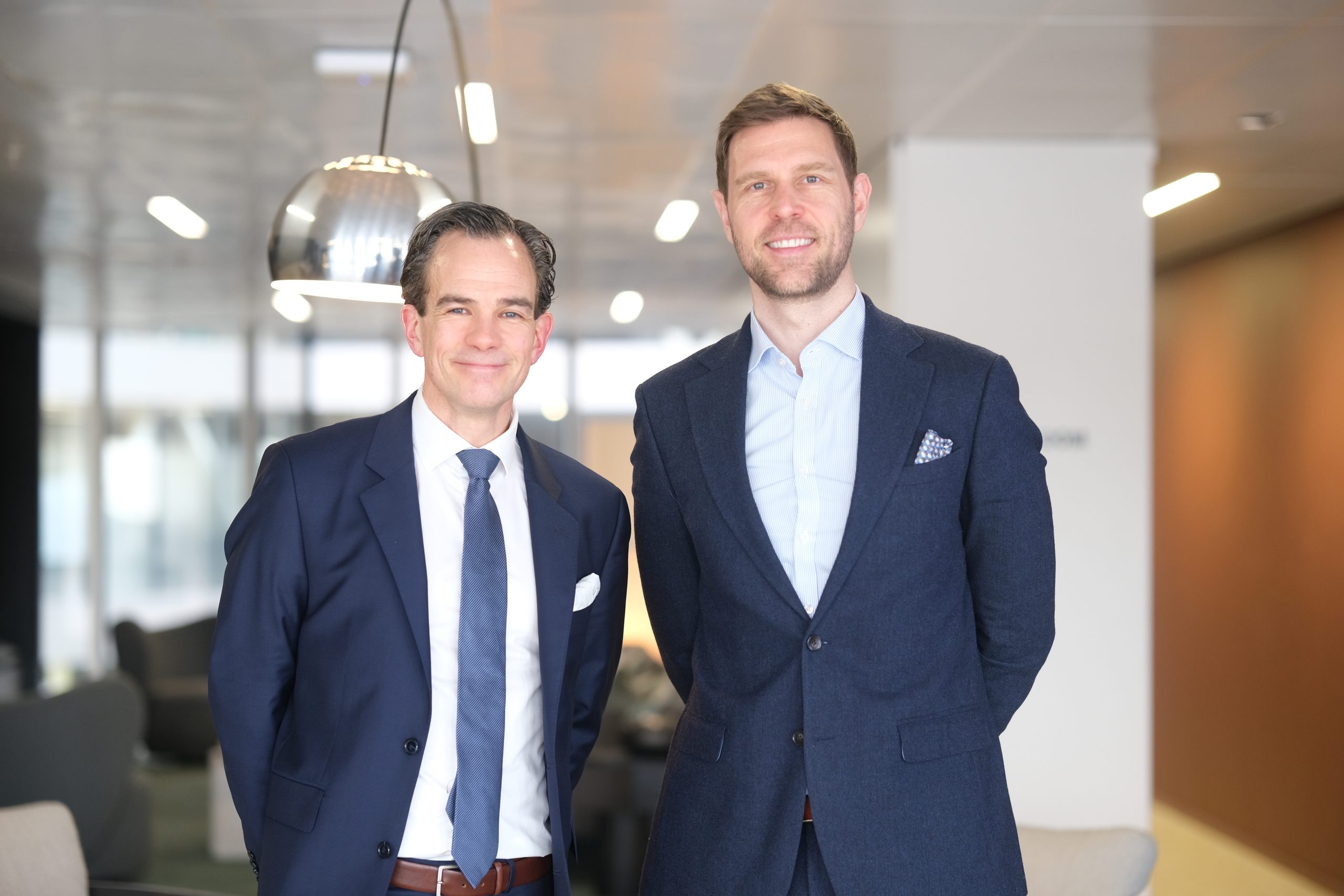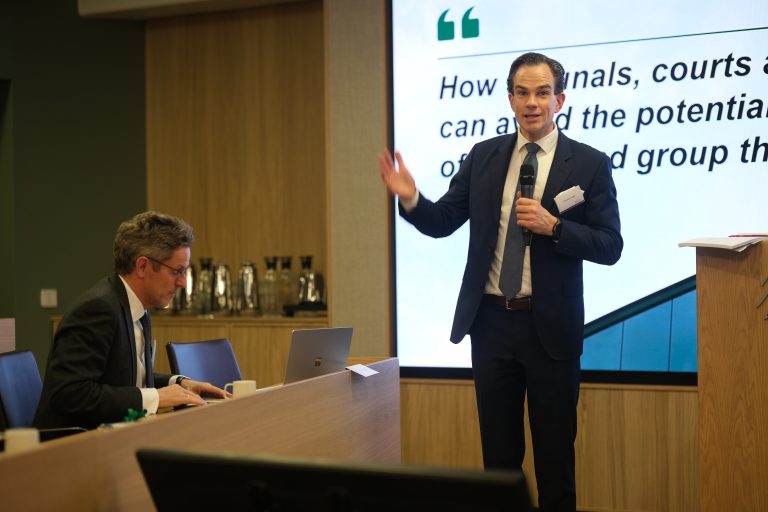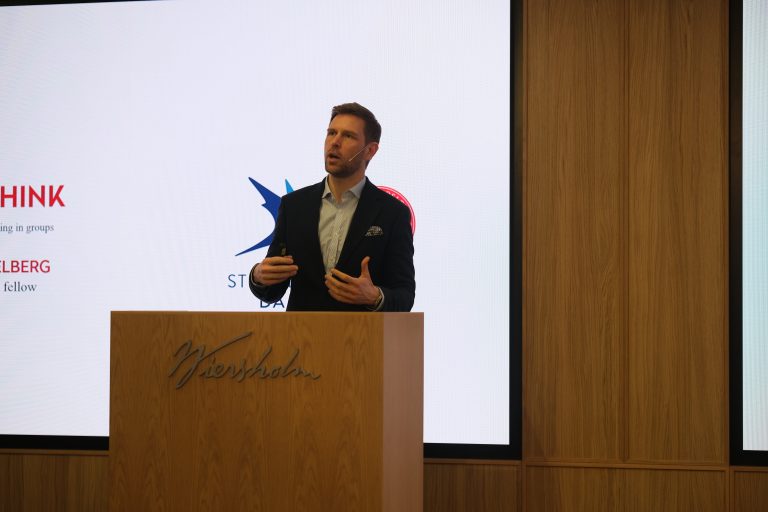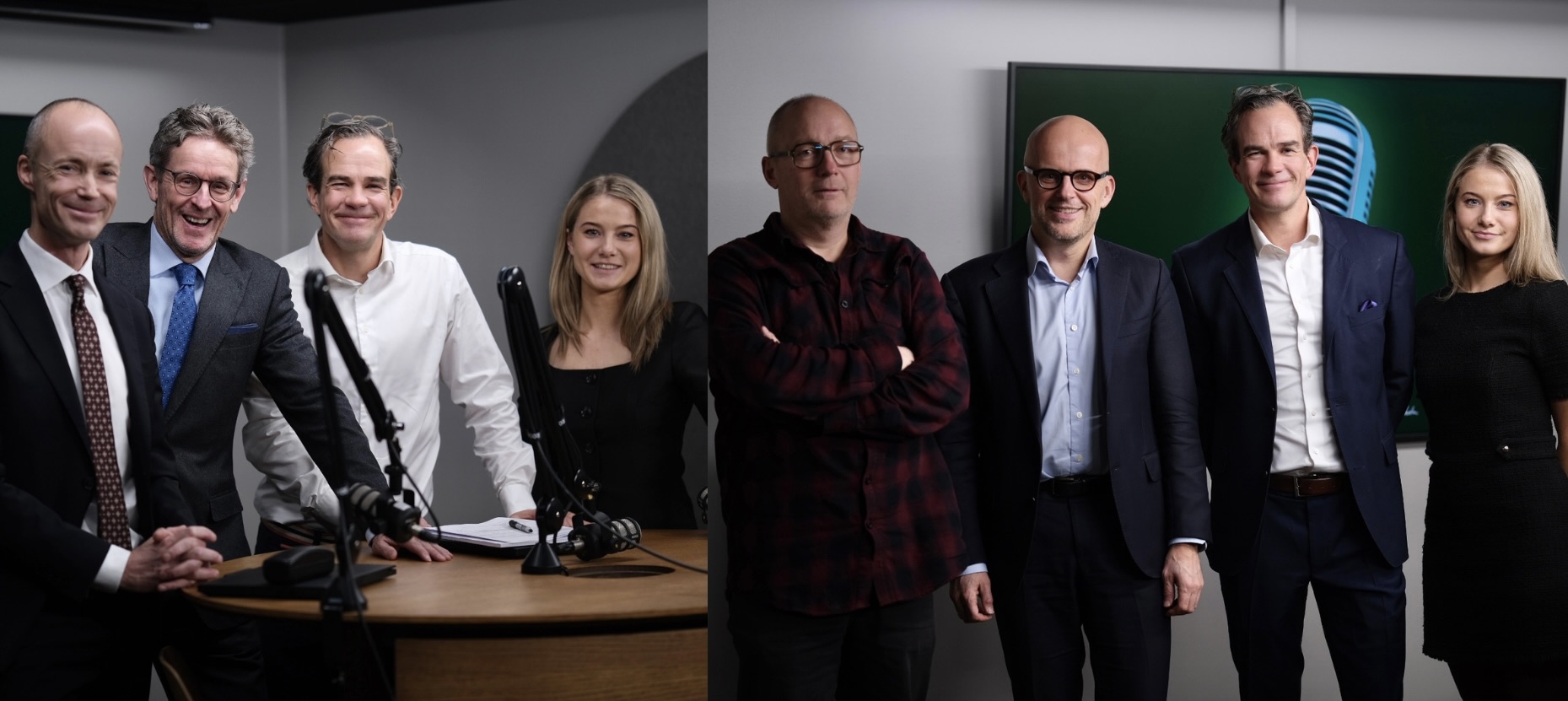The psychology of decision-making in the courts: -The principle of equal treatment is a utopia

Psychologist Jan-Ole Hesselberg is critical of the courts not basing their decision-making processes on research. He is supported by Wiersholm Partner Christian Hauge.
This article is written by journalist Thea N. Dahl and was published in Advokatbladet on Tuesday 26 March. Read the article in Norwegian here.
For ten years, Wiersholm has collaborated with Psychologist Jan-Ole Hesselberg. The reason is quite simple: To ensure the best possible decision-making processes.
In 2022, Hesselberg published the book “Better decisions” in which he writes about what influences the choices we make. He has also been the subject-matter expert for the science shows “Folkeopplysningen” and “Typisk deg” on Norwegian television, worked on a number of podcasts, and is currently pursuing a PhD in the psychology of decision-making.
Hesselberg gives what he terms popular science lectures on decision-making, communication and collaboration in groups. He also conducts courses on the same topics and offers consulting services in the psychology of decision-making.
Twice a year, he visits Wiersholm to talk about the psychology of decision-making, with a particular focus on confirmation traps. He has also conducted similar programmes in collaboration with the Norwegian National Courts Administration.
Earlier this year, Hesselberg attended an event ahead of Norwegian Arbitration Day, where decision-making processes were discussed in the context of arbitration, focusing on a case with three arbitrators.
-The aim was to facilitate a discussion about what is best practice for arbitrators when they have to make a decision in the case, relates Wiersholm Partner Christian Hauge, who is also the Chair of the arbitration association Nordic Offshore & Maritime Arbitration Association (NOMA).
Blinding in groups
There are several dangers lurking which may throw a spanner in the works of a good decision-making process, but two in particular stand out. One is confirmation bias, where you seek to confirm what you already know or believe. The other is groupthink, where a point of view may be coloured by a desire not to stand out in a group.
-When we have to make important decisions, such as a litigation risk assessment, we try to use the tools we have learned from Hesselberg, says Hauge.
-To prevent groupthink, we do something called blinding. This means that each person should take a stand on the most important points on their own and force themselves to have an opinion on these before meeting as a group. When the group then gathers, you should not start by discussing the conclusion, but the argumentation. That way, as much information as possible is brought out before a decision is made.

Chrisitan Hauge. Photo: Wiersholm
Wants more research into court processes
Psychologist Hesselberg is critical of the courts not basing their decision-making processes on research, but rather relying on traditions.
Around Christmas, he posed a question to the Supreme Court, in the comments field under a LinkedIn post about the deliberations in the ACER case, asking why the leader of the court should speak first during deliberations when research – according to Hesselberg – shows that the most effective approach for a good decision-making process is the opposite, as they do in Sweden. This is because the opinions and clear conclusions of authorities early in a process tend to influence the discussion, according to the Psychologist.
-In the courts, the judges do things in a certain way, but without evidence being required that this gives the best result. On the contrary, there is quite a lot of research showing that parts of the way the courts work may lead to quite inconsistent decision-making processes, says Hesselberg.
He points out that there are many factors other than the case itself and the criteria by which the case is considered that affect the outcome. Such as different experiences, the order in which the case is discussed, and whether you are a novice or not.
-Everyone is influenced by group processes. We are influenced by how the information is presented, by our mood and a number of other things that are completely irrelevant to the decision to be made.
-Identical cases will not be treated equally
Hesselberg believes that the risk of inconsistent decision-making processes is so well documented that the principle of equal treatment is a utopia.
-Identical cases will not be treated equally. That is the biggest problem. In addition, you can get systematic biases. A while back, the newspaper “Dagbladet” reviewed a number of drunk-driving cases. The review showed that men receive harsher sentences than women for the same offences. That is a systematic bias.
According to Hesselberg, a typical counterargument against influence in the courts is that what happens there is so important and so much is at stake, that the judges will not be biased. He believes the opposite is happening.
-When there is a lot at stake, we tend to become more conformist, and we adapt to other people because we certainly do not want to be left out of the group. You do not want to be the one making the wrong decision. It is better to make a wrong decision together with many others, he says.

Jan-Ole Hesselberg. Photo: Wiersholm
He believes the burden of proof lies with those who think that this is not a problem.
-It is important to emphasise that the decision-making processes in Norwegian courts, and perhaps especially in the Supreme Court, are some of the best we have. These are wise people who invest a lot in making decisions in a good way, and who spend time on their decisions. Nevertheless, there is a potential for improvement in all human decision-making processes.
Thom Arne Hellerslia, who now is a Supreme Court Justice, has also pointed out that “circumstances beyond the legally relevant” may influence a court decision because not even judges are exempt from being influenced by psychological decision-making mechanisms.
“Different judges may therefore reach different results in cases where the outcome, based on the circumstances of the case, should have been the same”, he wrote in an article in the journal “Lov og Rett” last year (no. 2 / 2023).
Read the Supreme Court’s response to the criticism at the bottom of the article!
Professional judge vs. lay judge
Even though the psychological phenomena that occur when a group is to make decisions together have been researched for a long time, we still know little about the effects this has on a panel of judges in court.
In an article in the International Journal of Court Administration, Professor of Law at Trinity College in Dublin, Brian M. Barry, discusses the psychological processes of group decisions from a court case perspective. He believes more research in the field will both increase the understanding of decision-making processes in the courts, as well as improve the quality of the decisions.
Both Lawyer Christian Hauge and Psychologist Jan-Ole Hesselberg agree.
-At the district court level, for example in the consideration of a criminal case, it would have been interesting if research was carried out on the dynamics between lay judges and professional judges, says Hauge.
-That is a very good example, Hesselberg adds.
-You could run some cases where everyone received the same initial instructions but were not allowed to discuss the case amongst themselves along the way. Then, before the discussion regarding the decision starts, all the judges could separately make a preliminary assessment of the legal issues, before meeting to discuss the actual decision. If, for example, it is found that the lay judges initially agree, while the professional judges think differently, and the judgment nevertheless ends up being in accordance with the professional judge’s opinion, that would have been a very interesting discovery, he says.
Balanced decision-making
In order to have the best possible decision-making process, the prerequisites must be in place. This means different people with different perspectives, knowledge and abilities, in other words, cognitive diversity.
-And you need to have psychological safety in the group. It must be safe to disagree with the consensus. You can never achieve this one hundred percent, because we are human beings and adapt to others around us – especially when social relations are at stake, and we have to meet them again the next day, explains Hesselberg.
Furthermore, it is about how the process is organised. Hesselberg speaks warmly about a method he calls “balanced decision-making”. Here, all group participants must submit individual assessments to an independent moderator before the group meets, as Wiersholm does in the face of, for example, a litigation risk assessment.
-Firstly, it counteracts conformity because you are forced to form an opinion independently of what others think. You are also not influenced by authorities, and, in addition, you avoid what we in Norwegian call social bumming, i.e. that the individual effort decreases when collaborating with others.
When the group then gathers, the discussion starts with everyone presenting arguments. Then there is a critical discussion about the positions that have been presented before a vote is taken. The conclusion comes at the end and should not be discussed earlier in the process.
-Much of it is about getting used to this way of doing it. It does not necessarily take that long. I myself have conducted meetings down to twenty minutes based on this method, with ten minutes to collect assessments beforehand. The method is particularly well suited in some processes, such as in the courts where the same processes are carried out every time, says Hesselberg.
Dissenting opinions in 1 of 5 Supreme Court cases
Ida Dahl Nilssen, Communications Manager at the Supreme Court, believes Hesselberg has some interesting observations on a topic in which the Supreme Court is interested.
-It is a fundamental principle in the Supreme Court that the justices are independent and that they should not influence each other’s views during the proceedings. The justices therefore practice a fundamental rule that there is never any discussion about a case beforehand or while the case is ongoing in court. They should each, on an independent basis, prepare for the later deliberations during which the opinions will be presented, she says.

Ida Dahl Nilssen. Photo: Kari Hegstad
Before the deliberations, the justices, uninfluenced by each other, should form their own reasoned opinions – not just about the result, but also about what should be the path to the conclusion.
– They do not express their opinion of the case until the deliberations. Even though the justice with the longest seniority starts the deliberations, all the justices are allowed to speak uninterrupted in turn. It is not uncommon for positions to be adjusted or changed after hearing others’ views; Nilssen continues.
-The justices are obliged to “act and deliver judgments in a manner that I can defend according to the law and my conscience”, as stated in the judges’ affirmation. The obligation to act from conviction relatively often leads to dissenting opinions. Last year, there were dissenting opinions in 21 per cent of all civil cases, and 19 per cent of criminal cases.
Kontaktpersoner
Publisert:
Sist oppdatert:



